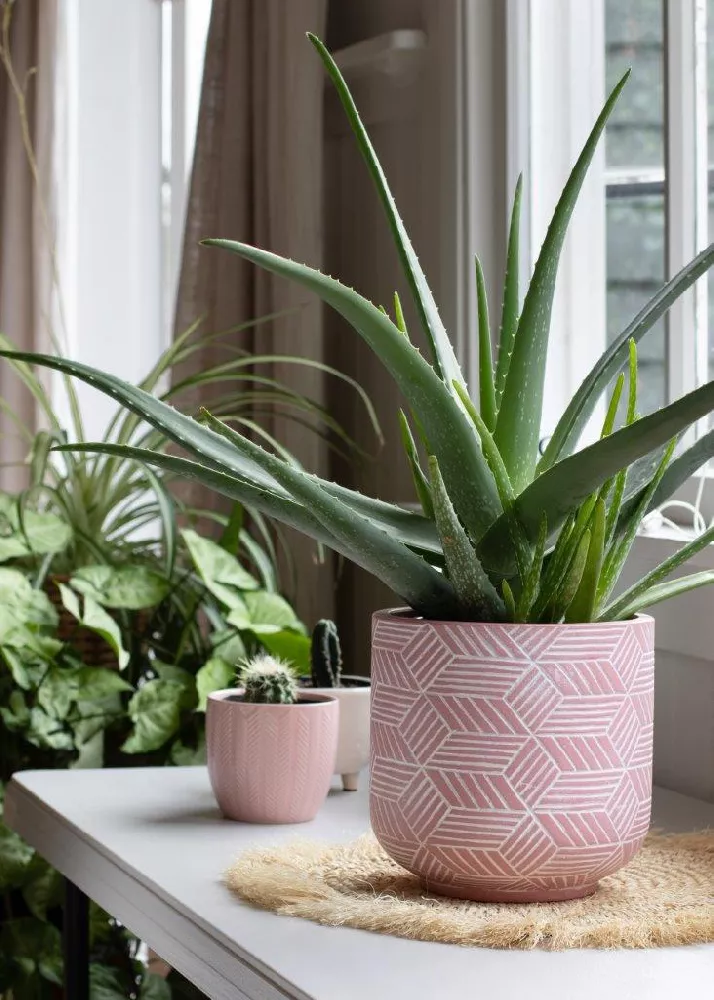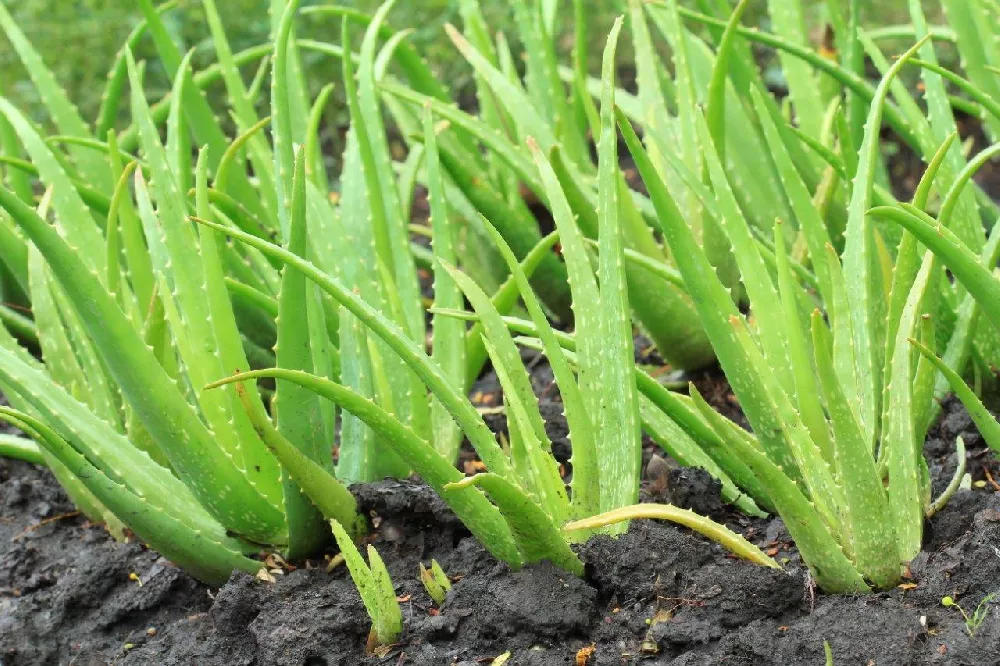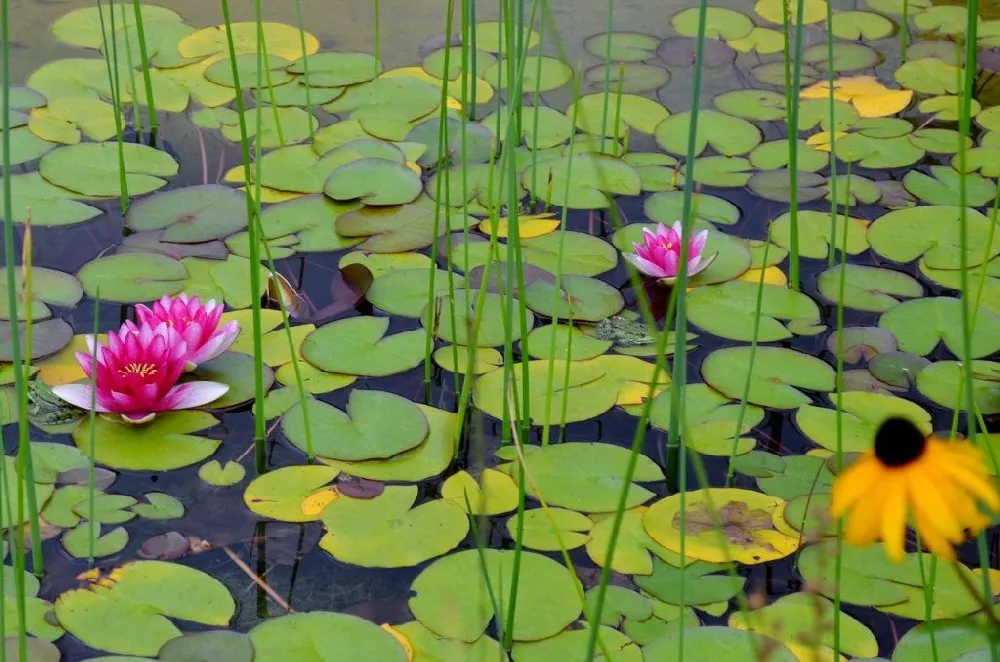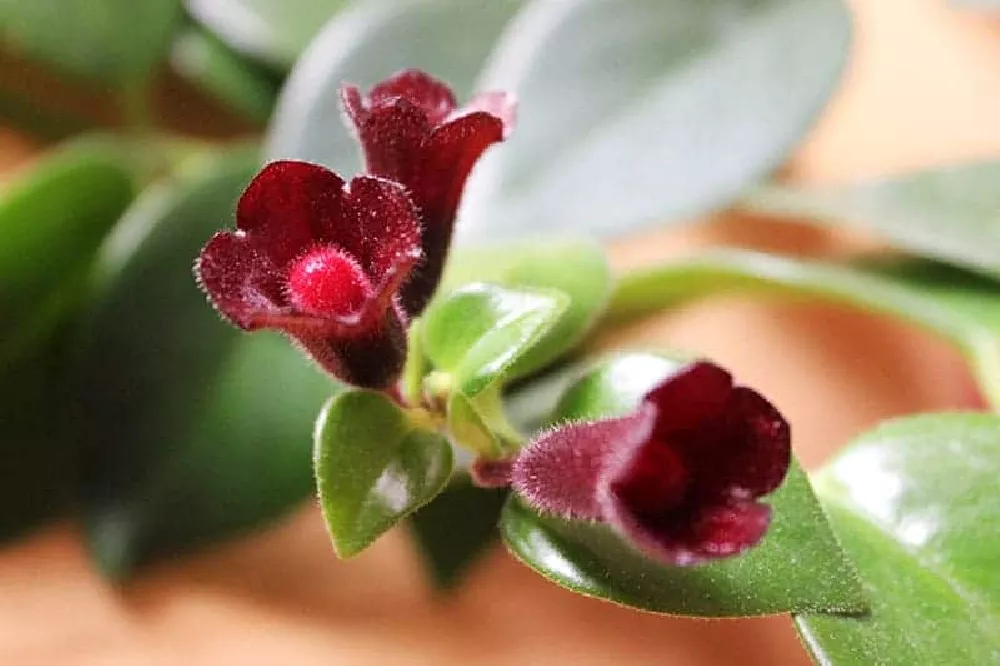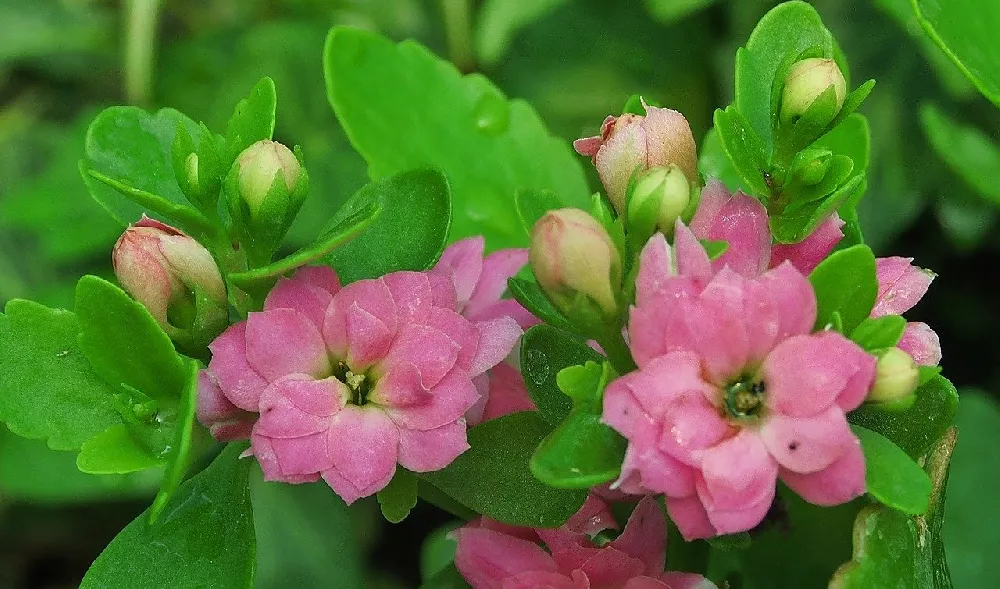- Home >
- Houseplants >
- Aloe Vera
Aloe Vera for Sale - Buying & Growing Guide
Aloe Vera Plants (Aloe barbadensis var. Miller) are beautiful, easy-to-care-for succulents. Plant lovers can use Aloe Vera Plants as indoor decorations in rooms that receive bright, indirect sunlight, and take advantage of their juice as a topical remedy for minor burns and cuts. Aloe Vera Plants are also known to:
- Produce a pain-relieving, anti-inflammatory gel that can help heal burns, abrasions, and other minor injuries
- Generate offsets, or “pups,” for additional plants
- Tolerate absent-minded owners who may forget to water regularly
Enter your zip code to find nearby stores that may carry this plant.
Plant Care
Sunlight

Needs 6 hours of direct light a day, whether grown indoors or out.
Watering
During the growing season, water thoroughly but infrequently, allowing soil to dry out between waterings. In winter, cut back on water.
Fertilizing

Feed during the growing season with a balanced fertilizer formulated for house plants. Avoid fertilizing in winter.
Planting and Care
Planting instructions
As a native of the semi-tropical Arabian peninsula, Aloe Vera Plants thrive in hot, dry conditions. Therefore, keeping your plant in an environment with warm temperatures, and ensuring its soil drains well is essential to its health and longevity.
Choose a pot made of terra cotta or equally porous material with at least one drainage hole in the bottom. Use a well-draining potting mix containing lava rock, bark chunks, perlite, or all three. Do not use regular gardening soil. Fill the pot about a third of the way with soil, and place the plant inside. Add the rest of the soil, leaving the bottom leaves resting just above the soil. Place the pot where it will receive indirect sunlight, and wait at least a week to water.
Watering and nutrients
As succulents, Aloe Vera Plants don’t need much water to thrive. Water your Aloe Vera Plant once every three weeks, but test the soil before watering to check if it is dry. Aloe Vera Plants are susceptible to root rot if they are overwatered, or not properly drained, so the top one to two inches of soil should be dry before you water your plant. You only need to fertilize Aloe Vera Plants in the spring and summer, and should do so about once a month at most. Use a balanced houseplant formula mixed at half-strength.
Pollination
Aloe Vera Plants do not self-pollinate. In the U.S., Aloe Vera Plants are usually pollinated by long-beaked birds like hummingbirds. However, as most Aloe Vera Plants in the U.S. are kept as houseplants, they are less likely to bloom reliably. Aloe Vera Plants can be kept outdoors in the summer months, as long as the temperature is between 55 and 80 degrees Fahrenheit. This can increase the chances of flowering. Aloe Vera Plants produce offsets (“pups”) asexually. These offsets can be cut from the parent plant, and repotted to grow new Aloe Vera Plants.
Pruning
Aloe Vera leaves are green, thick and fleshy, with serrated margins. To keep your Aloe Vera Plant as healthy as possible, trim any edges or whole leaves that turn pinkish-brown or yellow. For small or medium-sized plants, you can use a knife, and for larger plants, you can use sheers. If you are pruning leaves to remove the juice, you can use the same method, but don’t cut more than one-third of the plant at a time. You should also prune offsets that begin to grow from the parent plant in the same manner.
Pests and diseases
The most common diseases that affect Aloe Vera Plants are ones related to overwatering, including root rot, soft rot, leaf rot, and fungal stem rot. The best way to avoid having your Aloe Vera Plant fall victim to these diseases is to make sure your plant is in good-draining soil, and you don’t overwater it. Sap-sucking pests, like mites and aphids, are attracted to Aloe Vera Plants. To get rid of these types of pests, wash the plant with warm, soapy water, and rinse thoroughly. Insecticidal soap works as well.
Harvesting
If you want to harvest an Aloe Vera Plant’s juice for wellness purposes, choose a mature leaf. Remove the leaf using the pruning methods detailed above, then cut the leaf lengthwise. You can squeeze the juice out of the leaf and apply it to a cut or burn, or apply the leaf gel-side down to the affected areas. Do not ingest the gel, and make sure that pets and small children do not ingest the gel either, as it can cause nausea, kidney damage, and other side effects.
Light
Aloe Vera can adapt to low light, but to grow and to flower, it needs full sun. Place your Aloe Vera near a window where you have bright light all day long. Bright and indirect light is good for Aloe Vera. You can comfortably grow and nurture your Aloe Vera in an indoor environment.
Repotting
Repotting always has the risk of damaging the plant. But you can do it.
Here’s the step-by-step guide.
1. To unpot the plant, first, loosen the soil around the plant either by squeezing the sides of a flexible pot or shaking the pot and using your hands.
2. Tip the pot and wiggle the plant out.
3. After removing the plant from the pot, examine the roots and shoots. Dark, brown oozy roots are not good. That means the roots are rotting away. Also, look for offshoots you can cut off. Cutting offshoots will help your Aloe thrive beautifully.
4. To cut an offshoot, use a sharp knife or just tug gently at offshoot. Place in potting medium, water, and allow several weeks for roots to take hold. Be sure to keep them in a dry place, Aloe is slightly toxic to animals, so make sure no animals come in contact with it.
5. Prepare your pot with new soil that will drain well. Put gravel at the bottoms of the pot so that the pot can quickly drain the excess water.
6. Place the plant into the soil and loosely fill in the gaps with more soil.
FAQs
Do Aloe Vera Plants need a lot of sun?
Can you grow Aloe Vera Plants outdoors?
Aloe Vera Plants need to be kept at temperatures between 55 and 80 degrees Fahrenheit, so you should only place them outdoors when temperatures are in this range. For most areas of the U.S., this means keeping them inside during the fall and winter months, and placing them outside in the spring and summer. If overnight temperatures drop below 55 degrees Fahrenheit, bring the Aloe Vera Plant inside to avoid frost, which can harm or kill the plant.
How long do Aloe Vera Plants live?
Like other succulents, Aloe Vera Plants tend to grow slowly, as a way to reserve water and nutrients. It usually takes a few years for an indoor Aloe Vera Plant to reach its full size, which is about 18 inches. With proper care, an Aloe Vera Plant can live up to 12 years. However, by pruning and repotting offsets, you can ensure that you will always have an Aloe Vera Plant thriving in your home.
Are Aloe Vera Plants poisonous to pets?
If you have a pet, you will want to keep them away from your Aloe Vera Plant. While Aloe Vera juice has medicinal properties for humans, it has a mild to moderate level of toxicity for household pets like cats and dogs. If these animals ingest Aloe Vera juice, it can lead to vomiting, diarrhea, tremors, lethargy, and a change in urine color.
Compare Similar Products
Customer Reviews
 My mother love her plant
My mother love her plantMy mother sent me a photo of her plant to me by Text and she love her plant a lot and thanks you for a great Job and please keep up with the good work
